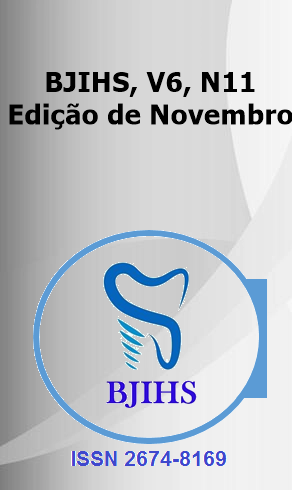Abstract
Human rabies, a viral zoonosis caused by Rabies virus (RABV), of the genus Lyssavirus and family Rhabdoviridae, represents a serious public health challenge, especially in developing countries. The disease is almost always fatal after the onset of symptoms, despite advances in prophylaxis and treatment. This study reviews the epidemiology, transmission, prophylaxis, and new therapies for rabies, with the aim of updating the available information and exploring new therapeutic and public health approaches. The research, carried out in June 2024, was conducted through the BVS, PubMed, SciELO, Google Scholar, and UpToDate databases, covering studies published between 2020 and 2024 in Portuguese, Spanish, and English. Descriptors such as "Rabies", "Rhabdoviridae Infections", and "Rabies Vaccine" were used, resulting in 1882 initial studies. After rigorous screening, 300 articles were considered eligible and 16 were analyzed in detail. The analysis highlighted the importance of mass vaccination, early diagnosis and prophylaxis strategies in preventing the disease. Despite the challenges, strengthening surveillance programs and public education are crucial for rabies control, with advances in vaccines and therapies offering a positive outlook for the future.
References
ALVES, Leilane Nascimento et al. INQUÉRITO EPIDEMIOLÓGICO SOBRE A COBERTURA VACINAL ANTIRRÁBICA HUMANA, CONHECIMENTO SOBRE A RAIVA E FATORES DE RISCO DE AQUISIÇÃO DO VÍRUS RÁBICO (LYSSAVIRUS, RHABDOVIRIDAE) ENTRE PROFISSIONAIS DA SAÚDE: MÉDICOS-VETERINÁRIOS, BIÓLOGOS E ZOOTECNISTAS. Revista Ibero-Americana de Humanidades, Ciências e Educação, v. 1, n. 2, p. 317-336, 2023.
BAKER, Henry J. et al. Rabies: who should care?. Journal of the American Veterinary Medical Association, v. 261, n. 4, p. 592-596, 2023.
BASTOS, Victor et al. Neuroimmunology of rabies: New insights into an ancient disease. Journal of Medical Virology, v. 95, n. 10, p. e29042, 2023.
BRASIL. Ministério da Saúde. Situação Epidemiológica da Raiva no Brasil: 2010 a 2020. Brasília: Ministério da Saúde, 2020. Disponível em: https://www.gov.br/saude/pt-br. Acesso em: 14 set. 2024.
ČERNE, Danijela et al. Descoberta de um novo lyssavirus de morcego em um morcego de dedos longos (Myotis capaccinii) da Eslovênia. PLoS doenças tropicais negligenciadas, v. 17, n. 6, p. e0011420, 2023.
CONCEIÇÃO, Paulo; ABREU, Cândida. Human rabies: optimization of prevention and paths towards the cure. Acta Medica Portuguesa, vol. 34 (11), p. 767-773, 2020.
DE SOUZA SILVA, Anita et al. Aspectos epidemiológicos da raiva: Estudo descritivo. Pubvet, v. 16, p. 197, 2022.
DE SOUZA SILVA, Anita et al. TRANSMISSÃO DA RAIVA HUMANA SEGUNDO A REGIÃO BRASILEIRA E VARIANTE GENÉTICA ENVOLVIDA TRANSMISSION OF HUMAN RABIES ACCORDING TO THE BRAZILIAN REGION AND GENETIC VARIANTS INVOLVED. Licença Creative Commons Interfaces Científicas: contribuições em saúde, educação e humanas da Thesis, 2024.
DEVLEESSCHAUWER, Brecht et al. Epidemiology, impact and control of rabies in Nepal: a systematic review. PLoS neglected tropical diseases, v. 10, n. 2, p. e0004461, 2016.
DUARTE, Naylê Francelino Holanda et al. Epidemiologia da raiva humana no estado do Ceará, 1970 a 2019. Epidemiologia e Serviços de Saúde, v. 30, p. e2020354, 2021.
HAMPSON, K. et al. Estimating the global burden of endemic canine rabies. PLoS Neglected Tropical Diseases, v. 9, n. 4, p. e0003709, 2015.
HEMACHUDHA, Pasin; HEMACHUDHA, Thiravat. Rabies: Presentation, case management and therapy. Journal of the Neurological Sciences, v. 424, p. 117413, 2021.
JACKSON AC. Efeitos diabólicos da encefalite rábica. Revista de neurovirologia, 2016; 22: 8-13.
JIN J. Raiva. JAMA, 2023; 329(4):350.
KNOBEL, Darryn L. et al. Re-evaluating the burden of rabies in Africa and Asia. Bulletin of the World health Organization, v. 83, p. 360-368, 2005.
KUMAR, Anil et al. Canine rabies: an epidemiological significance, pathogenesis, diagnosis, prevention, and public health issues. Comparative Immunology, Microbiology and Infectious Diseases, v. 97, p. 101992, 2023.
LACY, Marian; PHASUK, Nonthapan; SCHOLAND, Stephen J. Human Rabies Treatment—From Palliation to Promise. Viruses, v. 16, n. 1, p. 160, 2024.
PINTO, Caroline Carvalho et al. Perfil Epidemiológico da Raiva Humana na Região Norte do Estado do Pará durante o período de 2000 a 2019. Saúde Coletiva (Barueri), v. 11, n. 67, p. 6937-6948, 2021.
RUPPRECHT, Charles E.; HANLON, Cathleen A.; HEMACHUDHA, Thiravat. Raiva reexaminada. The Lancet doenças infecciosas, v. 2, n. 6, p. 327-343, 2002.
SANTOS, Milane Ribeiro; SILVY, Rebeca Ribeiro; RIBEIRO, Laryssa Freitas. Ocorrências de Raiva Humana por Unidades Federadas do Brasil entre 2012 à 2022. Revista GeTeC, v. 12, n. 42, 2023.
SCOTT, Terence Peter; NEL, Louis Hendrik. Rabies Prophylactic and Treatment Options: An in vitro study of siRNA-and aptamer-based therapeutics. Viruses, v. 13, n. 5, p. 881, 2021.
VARGAS, Alexander. Perfil epidemiológico da Raiva Humana no Brasil, 2000–2017. 2020.
VELOSO, Rejane Dias et al. Perfil epidemiológico do atendimento antirrábico humano em Porto Alegre, RS, Brasil. Ciência & saúde coletiva, v. 16, p. 4875-4884, 2011.
WADA, M. Y. et al. Perfil epidemiológico dos casos de raiva humana no Brasil. Revista da Sociedade Brasileira de Medicina Tropical, v. 44, n. 2, p. 135-140, 2011.
WARRELL, M. J.; WARRELL, D. A. Rabies and other lyssavirus diseases. The Lancet, v. 363, n. 9413, p. 959-969, 2004.
ZHANG, Boyue et al. TRIM25 suppresses rabies virus fixed HEP-flury strain production by activating RIG-1-mediated type I interferons. Genes, v. 14, n. 8, p. 1555, 2023.

This work is licensed under a Creative Commons Attribution 4.0 International License.
Copyright (c) 2024 Pedro Fechine Honorato, Dhiego Alves de Lacerda, Celine Souza de Menezes Sá, Eryclys Abreu de Lira, Francisca Evelyn Abreu de Lira, Renata Braga Vale, Ubiraídys de Andrade Isidorio

